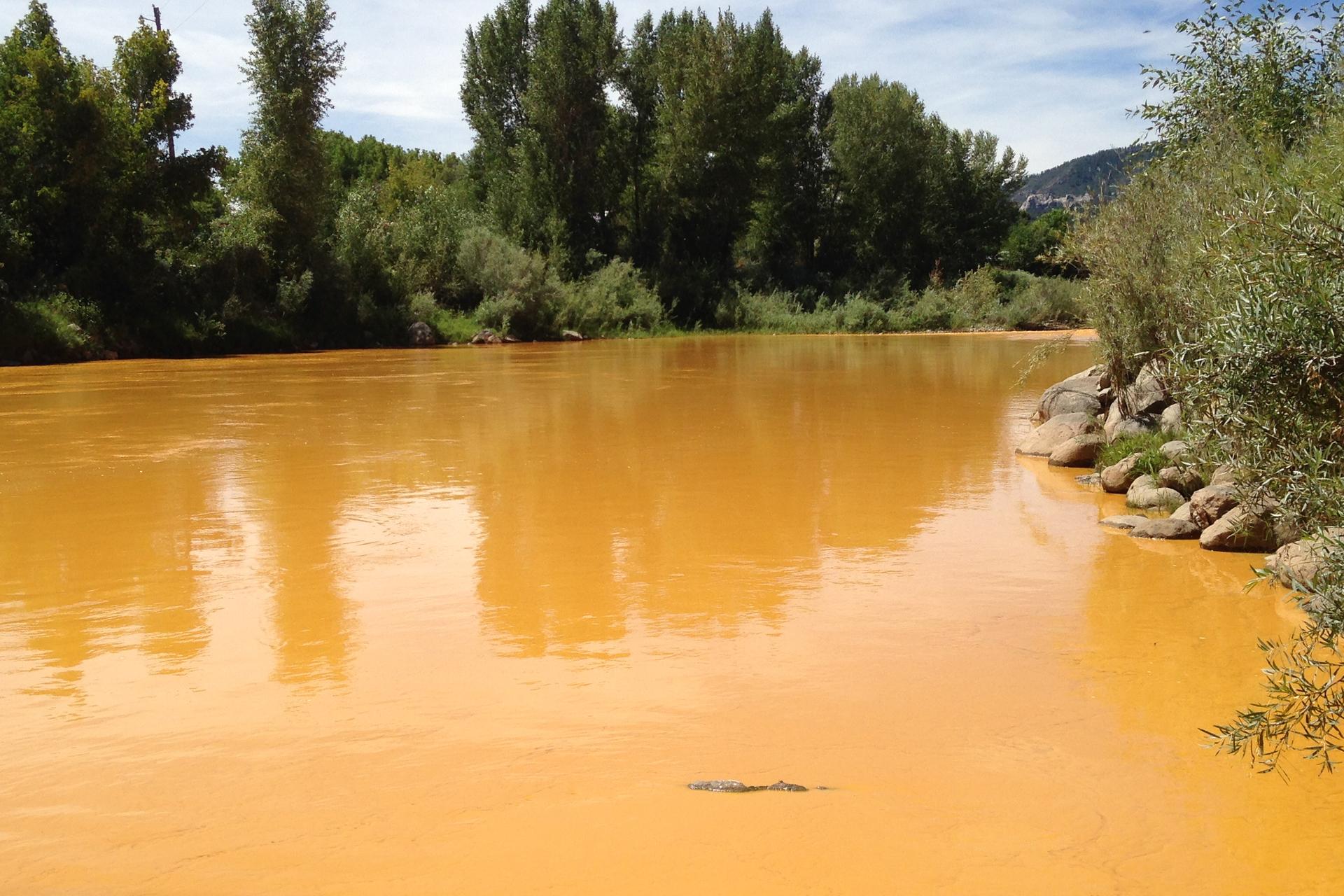EPA contractors caused gold-mine blowout that turned a river orange
The Animas River turned a mustardy-Tang color as the wastewater moved through. This was taken about 24 hours after the spill.
Orange. That was the new color of the Animas River in Colorado.
Contractors working for the EPA caused the blowout at the Gold King Mine in Silverton, Colorado. That released a plume of toxic orange-yellow sludge that eventually reached as far as Utah and New Mexico.
The EPA had been trying to clean up the contaminated site. The contracting crew was using heavy equipment to start pumping and treating the contaminated water inside the mine. But something went wrong. An earthen dam was breached, discharging 3 million gallons of orange water into the Animas River.
Jonathan Thompson, the senior editor at High Country News, says the water discharged into the river was “pretty nasty stuff.” “It was very acidic water when it came out and that acid had dissolved a bunch of metals into the water,” he says. “It looks like the main components were arsenic, copper, manganese, cadmium and zinc. Those are all potentially toxic at high enough levels, and they actually spiked up to pretty high levels.”
Near the town of Durango, the level of toxins in the water shot up as much as 10 to 1,000 times the normal background levels as the plume moved through, Thompson says. “It was a very bright orange color, and it was very silty,” he says. “You could see the sludge roiling around in the water. It was a shocking sight.”
The EPA has been criticized for not announcing the blowout quickly enough. New Mexico’s governor, in particular, expressed frustration that the state did not get adequate notice about the spill and said she was "disturbed” by the lack of information EPA provided. Gina McCarthy, EPA’s administrator, visited New Mexico soon after the accident, which eased the tension somewhat, according to Grace Hood, the Energy and Environment Reporter for Colorado Public Radio.
Though the river water seems to clearing up, remnants of the wastewater remain along the banks. “You can see some of that orange sediment on the side of the river,” Hood says. “EPA is testing the sediment to find out what kind of concern it poses for health and some other aspects…because if you have a large spring run-off or something, that could stir up that sediment. They haven't gotten back those test results yet.”
A gold mine leak may seem like an unusual environmental problem to much of the country, but leaks from abandoned mines in Colorado are nothing new to people who live there.
“It's been going on since mining has been here, since the 1870s,” Thompson says. “Pretty much most mines leak something out — water that's acidic and loaded with heavy metals. Taken all together, all these mines — after 140 years of mining — it adds up. The Gold King Mine that had the blowout was discharging before the blowout and it will continue to discharge until somebody is able to figure out a way to stop it.”
Based on past experience, treating the wastewater from mines is the only solution to keeping the river clean, Thompson says.
“There was a much larger mine near the Gold King that was in operation until 1991," he explains. "In the 1970s, they started treating their water in order to comply with the Clean Water Act. After they shut down, they continued to treat the water to try to mitigate the problem, [but] after they left, the water treatment plant was shut down and water quality deteriorated pretty significantly.”
There have been attempts in the past to make the Gold King mine a Superfund site, which would free up federal funds for a water treatment plant, but until now, these efforts have been pushed aside. Now, Thompson believes, that is likely to change.
“I think that there will be enough pressure from downstream communities to pressure the town of Silverton, which is the closest town to where the spill occurred, to accept Superfund, because it's really the only thing I can imagine that could bring in enough resources to address this problem in a comprehensive way,” he says.
Hood agrees. “You talk to downstream users and they say that they really feel the impact of the decision that it wasn't made a Superfund site. So there are a lot more stakeholders now than there were maybe a couple months ago.”
Thompson says: “I think [the accident] is going to inspire a movement here, from Durango and probably from downstream users, as well, who are also being impacted in New Mexico, even into Utah. I think we'll be talking about it for a long time.”
This article is based on an interview that aired on PRI's Science Friday with Ira Flatow.
Our coverage reaches millions each week, but only a small fraction of listeners contribute to sustain our program. We still need 224 more people to donate $100 or $10/monthly to unlock our $67,000 match. Will you help us get there today?
